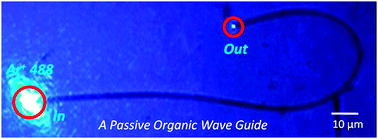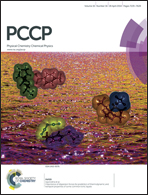Organic photonics: prospective nano/micro scale passive organic optical waveguides obtained from π-conjugated ligand molecules
Abstract
Nano/micro scale passive organic optical waveguides, which are self-assembled from tailor made organic molecules, are one of the less studied branches of organic photonics. This perspective article is primarily focused on the research work related to one dimensional (1D) passive organic optical waveguides. In the beginning, a brief theory of organic waveguides, recent works on active organic waveguides and attempts towards fabrication of integrated photonic components and circuits will be discussed. Later more focus will be given to passive organic wave guiding materials derived from 1D hexagonal submicrotubes, parallelepipedic nanotubes, shape shifting organic structures and paramagnetic tubes. By using laser ablation techniques, the polishing of organic tube tips, the precise control of the light propagation distance and the creation of multiple optical outputs will be discussed. This perspective also highlights some noteworthy applications of passive organic waveguides in remote sensing, excitation and defect identification. The end of this article concludes with the potential of passive organic optical waveguides in future organic nanophotonics.


 Please wait while we load your content...
Please wait while we load your content...